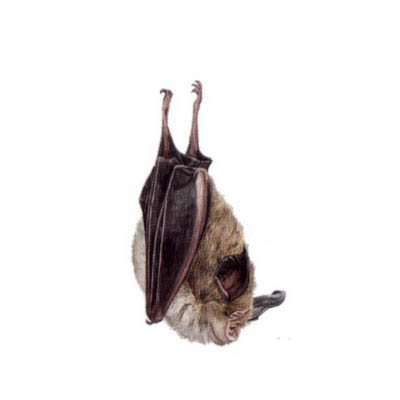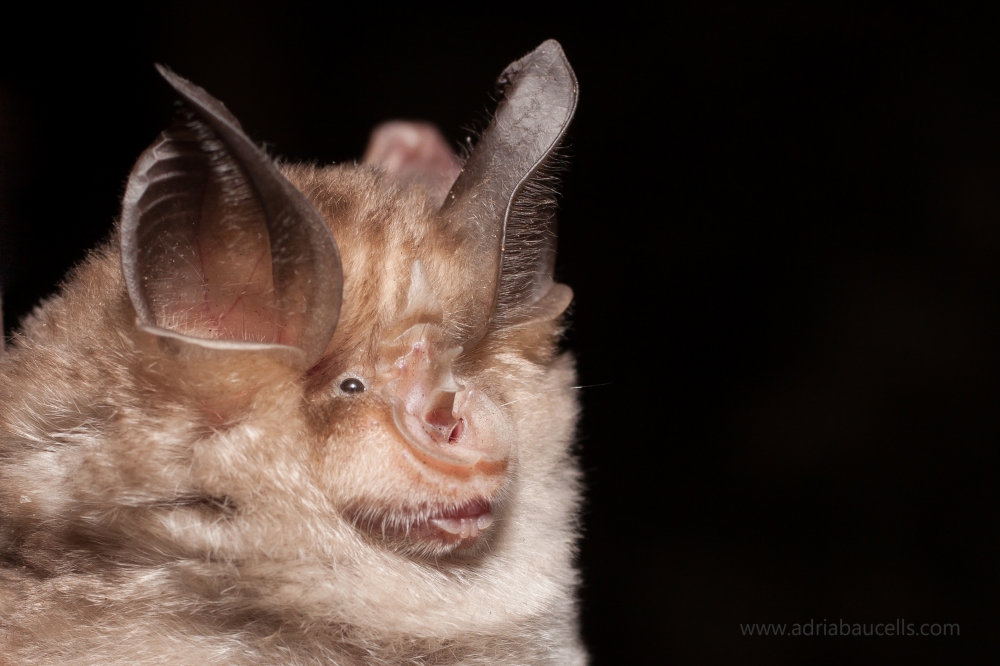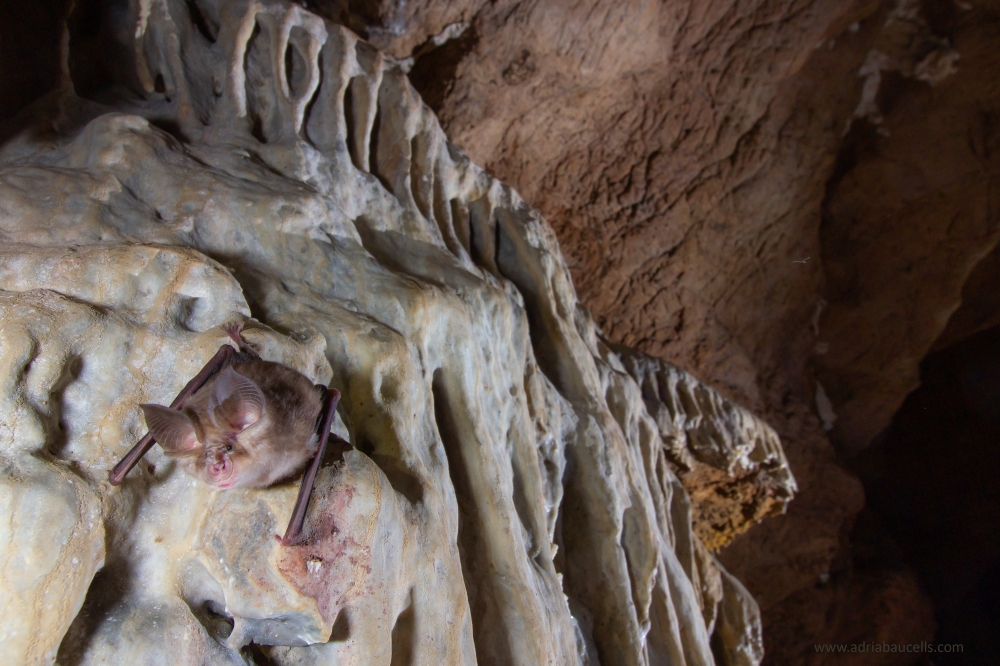Mediterranean horseshoe bat

Rhinolophus euryale (Blasius, 1853)
Rhinolophidae
Near Threatened
| Other names | |
|---|---|
| Catalan | Ratpenat de ferradura mediterrani |
| Spanish | Murciélago mediterráneo de herradura |
| English | Mediterranean horseshoe bat |
| French | Rhinolophe euryale |
| Basque | Ferra-saguzar mediterraneo |
| Galician | Morcego mediterráneo de ferradura |
Description
Medium-sized rhinolophid bat, similar to the Mehley's horseshoe bat (Rhinolophus mehelyi), with a body length between 43 and 58 mm, a forearm ranging from 42 to 50 mm, a weight of 14 to 18 g, and a tail between 22 and 30 mm. The ventral part's coloration is lighter than the dorsal, with a gray-brown colour. Juveniles tend to have a paler colouration than adults. The nose leaf is sharp and slightly curved at the top, allowing it to be distinguished from its congeners. The wing membranes have a gray-brown colour. The ears, between 17 and 24 mm long, are also brown.
It is easily distinguished from the greater horseshoe bat (Rhinolophus ferrumequinum) and the lesser horseshoe bat (Rhinolophus hipposideros) by the intermediate size and by characters of the nose leaf and wing, respectively.
Fotografies
Distribution
The distribution of this species includes the Mediterranean area, from the Iberian Peninsula, through central France, Italy, southern Slovakia, to northeastern Romania, northern Serbia, Greece, and western Turkey. It is also found in Northwest Africa (Morocco, Algeria, and Tunisia) and from the southern Caucasus to Turkmenistan, Iran, and Syria.
Roosts and phenology
This species is highly dependent on natural underground shelters throughout the year, using artificial shelters only in a few locations in the northern part of its distribution area. Maternity colonies usually consist of 20-300 individuals, with some reaching up to 5,000 animals. In Bulgaria, the largest known breeding colony has around 10,000 individuals, mixed with other cave-dwelling bats. These colonies are typically found in natural underground shelters such as caves and occasionally in mines or artificial shelters. Offspring are born from late June to late July, usually one per reproductive female. Juveniles become independent around 50 days of age, and females mate for the first time at 2-3 years of age.
It is considered a sedentary species, although it undergoes seasonal movements of 50-100 km between summer and winter roosts. The maximum recorded distance in the Mediterranean area is 134 km.
Habitat and diet
Its presence is linked to limestone areas with caves serving as shelters. It can be found up to 1,360 meters above sea level, mainly in Mediterranean climate valleys with deciduous forests, riparian forests, and scrublands, as well as olive groves and tree plantations. It is rarely found in coniferous forests and usually avoids open areas. Small colonies can also feed in deforested areas.
The diet consists of 90% moths, although other prey includes flies, neuroptera, crane flies, and hymenoptera. It typically hunts in wooded habitats, usually within a range of 4-10 km from its refuge. Its flight is very agile and maneuverable, capable of hunting in almost impenetrable shrubby areas. This species usually hunts in flight, only resorting to hanging from a branch when prey density is low or when females are pregnant.
Echolocation
As with the rest of the Rhinolophidae family, echolocation consists of constant-frequency calls with a duration ranging from 20 to 30 ms. The calls exhibit peak frequencies between 102 and 108 kHz, with lower frequencies in Western Europe compared to the Balkans. Although it is easily identifiable acoustically in much of its distribution, when in sympatry with the Mehely's horseshoe bat (Rhinolophus mehelyi), their calls may overlap. In such cases, it is included in the sonotype Rhinolophus euryale/R. mehelyi.
Status
According to the IUCN Red List, it is considered Near Threatened, with a negative population trend. This species is protected by national legislation, the Eurobats agreement, the Bern Convention, and the European Habitats and Species Directive. Over the last 50 years, populations of the Mediterranean horseshoe bat have experienced a constant decline. This species is primarily threatened by disturbances in its underground shelters, loss of hunting habitat, and the use of pesticides.

